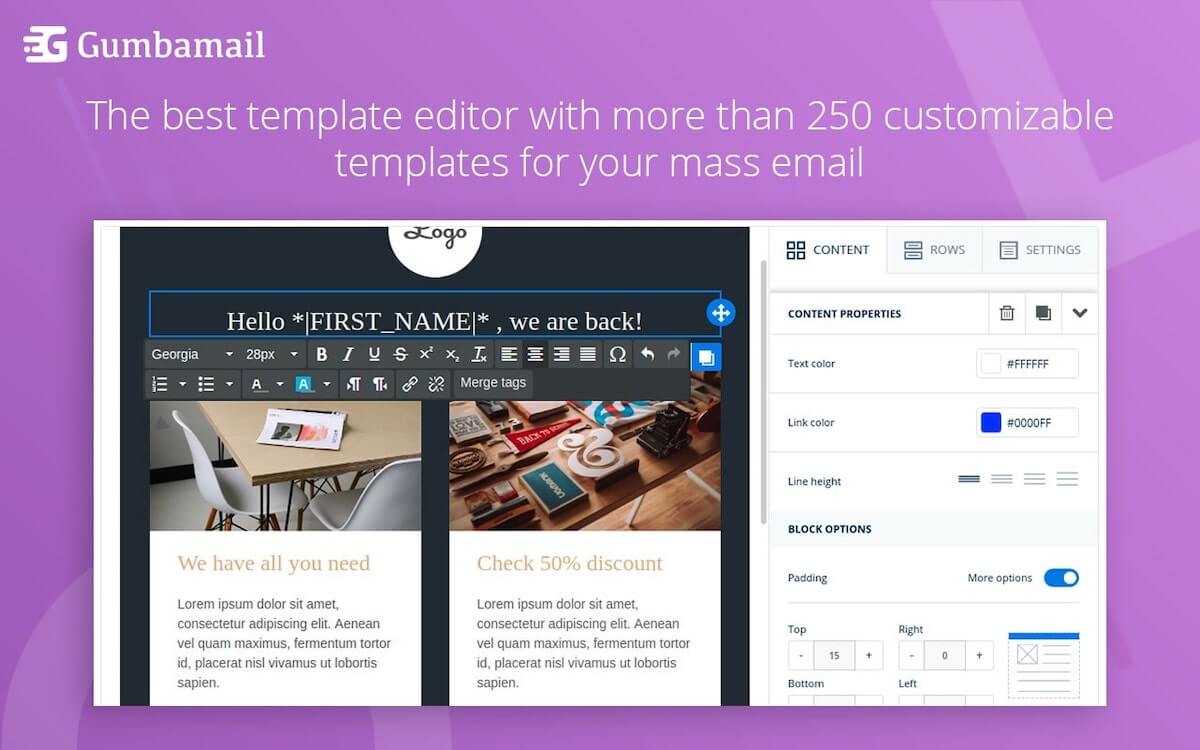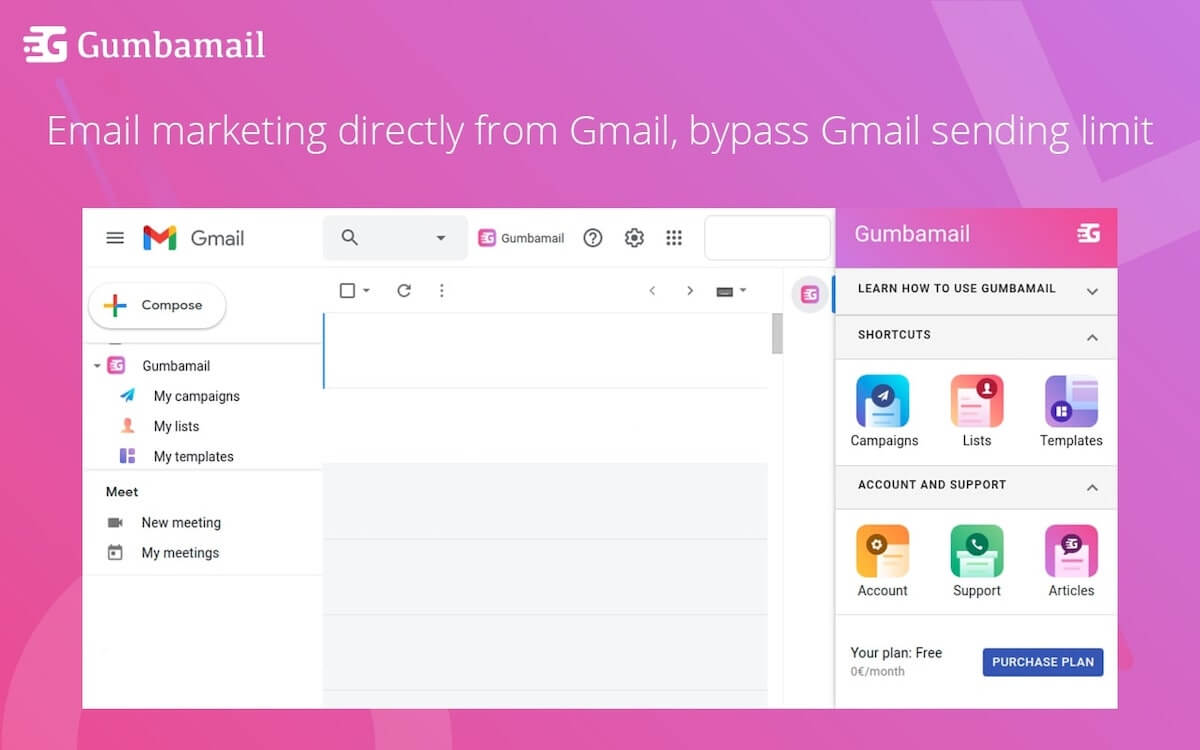What Is Email Conversion Rate and 4 Strategies to Boost It
The purpose of marketing isn’t just to grow your audience. Instead, you want to transform subscribers into qualified leads, which will (hopefully) lead to a sale.
Email is one of the most effective channels when it comes to lead nurturing. In fact, research shows that 60% of consumers subscribe to brands’ email lists, but only 20% of consumers will follow those same brands on social media. As a best practice, you should always track how many of your subscribers convert to first-time buyers.
Fortunately, many email marketing platforms provide you with the metrics needed to track conversions. That way, you can make science-backed tweaks to your marketing strategy, if needed, rather than relying on your own gut instinct. Below, we explain what email conversion rate is, how to calculate it, and how to improve it.
What Is an Email Conversion Rate, Exactly?
Your email conversion rate calculates the percentage of subscribers who took a goal action from an email campaign.
While we typically use email conversion rate to calculate how many subscribers completed a purchase, this isn’t the only goal of email marketing. For instance, depending on the type of email you send, other goal actions could include:
- Completing a survey
- Signing up for a 30-minute free consultation
- Reserving a seat at an upcoming webinar
- Requesting a demo of your product
- Writing an online review
- Following you on social media
- Offering a testimonial
- Referring a friend to your product or service
- Any other specific action that helps you meet your marketing goals
Whether a subscriber converts depends entirely on the goal of your email campaign. Not every email sent will guide the reader to make an ecommerce purchase. Instead, welcome emails and lead nurturing campaigns exist to educate, inspire, or guide readers to learn more about your company.
Email conversion rates can vary widely by industry. According to Barilliance, the average conversion rate across all industries was 1.33%, suggesting anything above 1% is typically considered a good conversion rate. However, similar research by GetResponse suggests average email conversion rates should hover between 5-6%, with automotive, publishing, and sports carrying industry averages of 5.37%, 6.12%, and 6.67%, respectively.
How to Calculate Your Email Conversion Rate

Some email providers offer built-in integrations to eCommerce platforms (like WooCommerce, Shopify, or Square) or event registration websites (like Eventbrite). These integrations automatically calculate the number of conversions, such as how many clicks lead to cart abandonment (i.e., a potential customer added products to a cart but did not submit payment).
However, even if these features aren’t included in your digital marketing platform, you can still calculate email conversion rate by hand, expressed as a percentage. Here’s what you do:
Email conversion rate = Number of conversions ÷ Number of emails delivered x 100
Is Your Email Conversion Rate the Same as Your ROI?
Calculating your email conversion rate is not the same as calculating your return on investment (ROI). Your conversion rate only calculates the percent of email subscribers that took a desired action. Your email marketing ROI, on the other hand, calculates your net return for each of those conversions, divided by the total cost of executing the campaign. For example:
If you send an email to 100 recipients encouraging them to sign up for a free webinar, and five subscribers choose to do so, your conversion rate is 5%. However, since the webinar is free, your ROI is still zero.
However, here’s where things get tricky: Let’s say one webinar attendee signed up for a coaching package for $1,200. If you spent $150 sending your campaign, your ROI would be calculated as follows:
ROI = Net return ÷ total cost x 100, or
($1200-$150) ÷ 150 x 100 = 700%
In this scenario, the ROI of your campaign is 700%, even though your initial conversion rate was just 5%.
4 Strategies to Boost Your Email Conversion Rate

Every small business owner wants to ensure their marketing efforts don’t go to waste. To boost your email conversion rate, try the following tactics:
1. A/B Test Your Subject Lines
Clearly, a subscriber won’t convert if they never open your email in the first place.
Increasing your email open rate is the first step in increasing conversions. To increase your email opens, start experimenting with subject lines to see which message resonate with your audience. Write your top two email subject lines, sending option A to 25% of your audience, and option B to another 25%, to see which performs better. Send whichever subject line “wins” your experiment to the remaining 50% of your email list.
2. Target Those Who Clicked Your Email
Research shows that abandoned cart emails help recover sales from 79% of visitors who place an item in their shopping cart but don’t make a purchase. But what do you do if 1) your email provider doesn’t offer abandoned cart functionality, or 2) an ecommerce sale wasn’t the intended goal of your campaign?
When it comes down to it, an abandoned cart email is nothing more than a targeted email message sent to a specific segment — a strategy you can replicate for nearly any campaign.
Think about it: Your click-through rate calculates the number of people who clicked a link in a given email marketing campaign. Most email platforms track which subscribers clicked a link, allowing you to create a segment and send a targeted blast to that segment.
For example, imagine your main CTA (call to action) is a webinar sign-up, and 20 subscribers arrive on your webinar landing page yet no one converts. The day before your webinar, create a targeted, “Last chance!” blast, reminding those 20 email recipients to sign up.
3. Personalize Your Email Content
Which would you rather read: An e-blast that was clearly sent to thousands of subscribers, or an email that reads as though it was personally written for you?
Research by Salesforce shows that personalizing emails can boost your email marketing conversion rate by 15-25%. Write the recipient’s first name in the salutation, and consider personalizing the body of your email as well. Email personalization should cause a spike in engagement, thereby guiding subscribers through the sales funnel.
4. Optimize Your Emails for Mobile Devices
To reach your conversion goal, your emails must be optimized for mobile use. Experts state that in 2020, mobile traffic accounted for 61% of all website visits — yet only 45% of ecommerce sales. To boost your conversion rate, be sure that your emails and your online store have a postive user exerpience for mobile.
Therefore, be sure to subscribe to an email marketing platform that offers pre-designed email templates, where all images, fonts, and layouts are optimized for mobile use.
Use Gumbamail to Boost Your Email Conversion Rate

Your email conversion rate calculates the percentage of subscribers who complete a desired action. While many business owners leverage conversion rates to see how many people completed a purchase, this metric can also calculate how many people submitted reviews, attended events, requested a demo of your product, or any other marketing goal.
Estimates for what constitutes a “good” conversion rate vary widely, between 1-6%. As a business owner, your goal should be to improve your conversion rate over time, intentionally guiding people down your sales funnel.
To boost your conversion rate, use Gumbamail for email marketing. Gumbamail is an affordable email marketing platform built exclusively for small business owners. Gumbamail works with your existing Gmail account, offers 800+ mobile-optimized email templates, and offers a built-in advanced reporting dashboard to track your marketing efforts. Plus, Gumbamail offers a free plan, allowing you to give it a try at no cost to your business.
Ready to see how Gumbamail’s email marketing platform can lead to more sales? Download the free plugin today.


